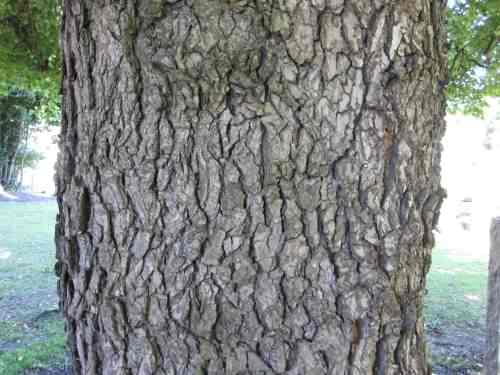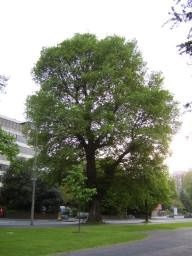
Photo ©2008 Christine Matthews

Photo ©2016 Max Coleman

Photo ©2006 Peter Bourne
Click any photo for a larger image
English Elm - Ulmus procera
Family - Ulmaceae
Also known as - Common Elm, Worcester Weed
Once a very common tree in the British countryside, the UK. Elm population has been devastated by Dutch Elm disease over the last 100 years. Elm is a deciduous tree capable of growing to 35–40m (113–131ft), more often found as a small tree in hedgerows as it was planted extensively during the enclosure movement of the late 18th century which saw thousands of miles of Hawthorn and Elm hedges planted. Elm was used from its habit of growing and spreading from suckers. Now rare in woodlands, it is reproduced by cuttings commercially or by the production of suckers from the root stock in the wild often reaching the size of a small tree when it usually dies, having produced the next generation from suckers. As a common tree it is restricted to areas close to Brighton in the south and Edinburgh in the north. Reputed to have been brought to the UK by the Romans it is an introduced species to Ireland, Australia, New Zealand and eastern North America.
Small reddish hermaphroditic flowers hanging in tassels appear in early spring before the leaves which are a dark green heart shaped oval 5–10cm (2–4in) long, without the pronounced tapered tip at the apex. The leaves have 10 to 12 pairs of lateral veins, a rough hairy surface, a characteristic asymmetric base and a serrate edge. Flowers appear in small clusters before the leaves maturing to rounded winged fruits (samaras) 10–17mm long with seed above the middle. Capable of growing to a tree in excess of 300 years old in good conditions, it has a dark grey bark on the trunk and larger branches which cracks into large flakes with deep fissures between. Not as biologically an active resource as the Oaks it is still associated with several moth and butterfly species including the Peppered moth, Large Tortoiseshell Nymphalis polychloros and Camberwell beauty Nymphalis antiopa. Producing a strong coarse textured timber, it has been used for furniture, boat keels, waggon wheel hubs, and originally for water pipes, because of its ability to withstand saturation.
BCP do not advise or recommend that English Elm – Ulmus procera is eaten or used as an herbal remedy. The leaves were shredded and used as cattle fodder.
 Photo ©2008 Christine Matthews |
 Photo ©2016 Max Coleman |
 Photo ©2006 Peter Bourne |
Click any photo for a larger image | ||
Site design ©1999– Brickfields Country Park - Privacy -